Thermaltake Bigwater A80 Liquid-Cooling System Review

This is the story of yet another company that decided to follow the footsteps of Antec, Corsair and CoolIt and give it a try with a new compact cooling system.
It’s been a while since Thermaltake Technology Co., Ltd. released a liquid-cooling system. The last one was Thermaltake PW880i announced in the middle of 2009, when it made very ambiguous impression. BY the way, that system never became really popular that is probably why it disappeared from retail pretty quickly after that.
And finally in the summer of 2011 Thermaltake was ready to announce two new liquid-cooling systems – Bigwater 760 Plus (CLW0211) and Bigwater A80 (CLW0214). The first one is a slightly enhanced modification of the old Big Water 760i with the support for all contemporary platforms and an improved water block and expansion tank. However, the second system is a completely new product for Thermaltake.
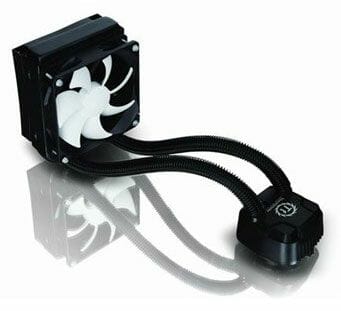
However, one glance at the newcomer will be enough for our regular readers to recognize the design of most compact liquid-cooling systems, such as Corsair H50 or Antec KÜHLER H2O 620. So, today we are going to find out if the new “Big Water” will be able to surprise us.
Technical Specifications and Recommended Pricing
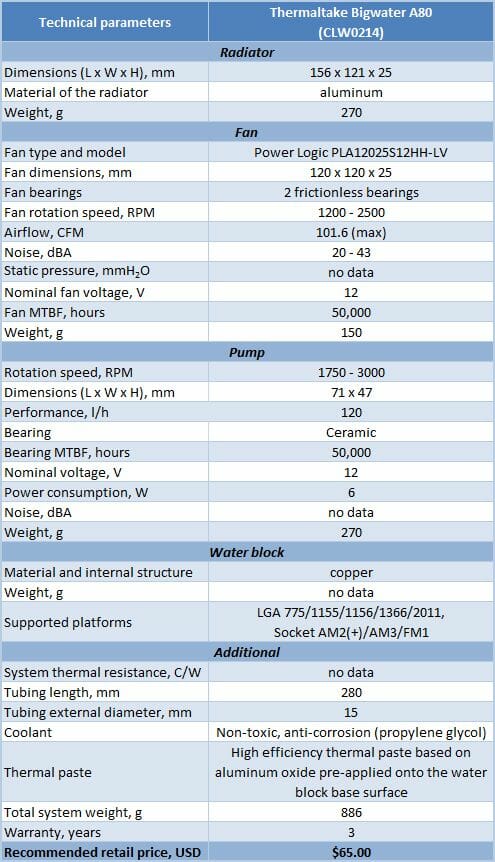
Package and Accessories
Thermaltake Bigwater A80 ships in a pretty standard box designed in Thermaltake’s well-recognizable style:
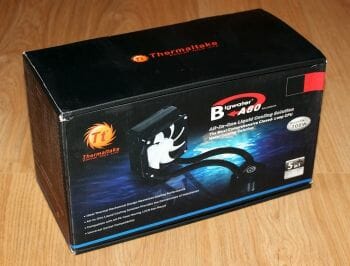
The back and sides of the box contain extensive information about the cooling system, including detailed technical specifications and even a comparative efficiency chart:
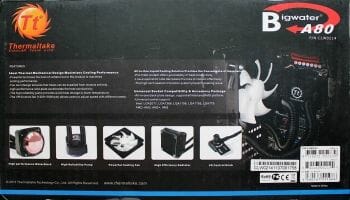
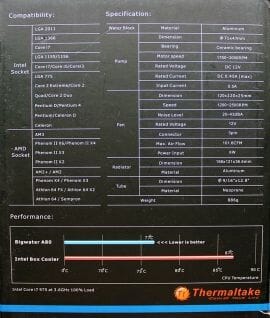
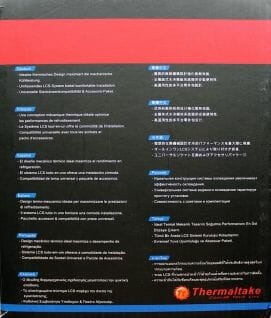
According to this chart, Bigwater A80 should be as much as 10°C more efficient than Intel’s boxed cooler. I have to admit that it raises a red flag right there, because any air super-cooler is 17-20°C more efficient than the boxed cooler that comes with Intel Core i7-980X Extreme Edition processor even without taking into account the noise.
The system is bundled with a universal plastic backplate, two sets of steel retention brackets with spring-screws, three sets of screws and an installation guide in 14 languages:
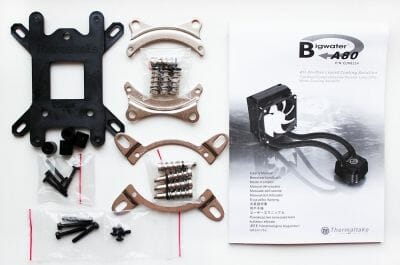
Thermaltake Bigwater A80 is made in China and costs about $65. It comes with a 3-year warranty.
Design and Functionality
The design of the new compact liquid-cooling system from Thermaltake can be considered a classic for the systems of this type. It consists of a radiator with attached fan, a pump and water block unit and connecting tubes in spring sleeves:
Very simple. The above mentioned liquid-cooling systems from Corsair and Antec are designed following the same exact principle.
The tubes connecting all these components together are 280 mm long. They are pretty hard and are firmly attached to the fittings with metal clamps.
The radiator is, of course, made of aluminum. It measures 156x121x25 mm.It consists of 19 thin flat pipes with thin corrugated aluminum band between them forming a cell structure.
The distance between the heatpipes is only 5 mm, and the gaps between the corrugated band ribbing are no more than 1 mm wide. Therefore, even though the effective radiator body is only 20 mm thick, we can expect it to be pretty hard to blow through. The radiator weighs 270 grams.
There are two fittings coming out of the radiator with two tubes 15 mm in external diameter clamped to them.The motor of the pump installed directly above the water block is covered with a plastic cap.If you lift it up, you will be able to see the motor and the control board with the power and monitoring cabled coming out of it.
According to the technical specifications, the pump’s performance is 120 l/h and its rotor works at 1750-3000 RPM and is PWM controlled. The pump features a ceramic bearing, which should last at least 50,000 hours or more than 5.7 years of uninterrupted operation. The maximum pump power consumption is declared at 6 W, but our measurements showed that it didn’t ever need more than 4.2 W. The pump power cable is connected to the four-pin CPU fan connector on the mainboard.
All we know about the water block is that it is made of solid copper and comes with a layer of “high efficiency” thermal paste applied to it.The base surface is very even and is very well finished, although they could have applied less thermal paste.
I would also like to add that the system is prefilled with non-toxic coolant based on propylene glycol and anti-corrosion additives and is leakproof.
There is a 120x120x25 mm fan that is attached to the radiator with four long screws. It has a black frame and seven-blade white impeller.
Note that the same Power Logic fan (PLA12025S12HH-LV model) is included with Thermaltake Frio cooler. The fan rotation speed can be set manually in the 1200-2500 RPM interval using a small variator on a short cable. The maximum airflow is promised to be pretty impressive – 101.6 CFM. The system should generate between 20 and 43 dBA of noise. The fan bearing has the same MTBF as the pump bearing.
Compatibility and Installation Tips
Thermaltake Bigwater A80 is compatible with all contemporary platforms including the newest LGA 2011. With the exception of the latter, all platforms require using the included universal backplate.
It is installed using screws and plastic bushes.At the same time, the steel retention brackets need to be screwed on to the water block.Now Bigwater A80 is ready to go into the system case. To properly accommodate this system, you case should have one slot for a 120 mm fan, where you will install a special plastic frame.
According to the manual, you have to insert the screws into the holes in this frame, which will hold the radiator on the back panel of your system case. However, this is where we discovered a problem: the retention screws from the Bigwater A80 bundle were shorter than needed and had a completely different threading increment than the retention holes in the radiator. Therefore, we had to use the retention screws from the retention kit that came with a similar system from Antec.
Using the longer screws we successfully installed the radiator with a fan onto the back panel of the system case.
The photo above shows the situation when the fan is installed behind the radiator, although Thermaltake’s manual recommends installing the fan so that the airflow would be pushed into the radiator and then hot air would be ousted out of the system case through the plastic frame and the back panel mesh. I have to say that we tested both possible installations and didn’t detect any noticeable differences in cooling efficiency in either case.
Once the radiator with the fan has been installed, all you have to do is place the water block onto the processor and tighten the screws evenly.
Now we are connecting the pump and fan power cabled to the mainboard and the system is ready to work. We are ready to proceed to the efficiency and noise tests in just a little bit.
Testbed and Testing Methodology
We tested the new Thermaltake Bigwater A80 and its competitor inside a closed system case. Here is our testbed configuration:
- Mainboard: Gigabyte GA-X58A-OC (Intel X58 Express, LGA 1366, BIOS F5c from 09/06/2011);
- Processor: Intel Core i7-980X Extreme Edition, 3.33 GHz, 1.225 V, 6 x 256 KB L2, 12 MB L3 (Gulftown, B1);
- Thermal interface: ARCTIC MX-4;
- Graphics card: Asus Radeon HD 6770 DirectCU Silent (EAH6770 DCSL/2DI/1GD5) GDDR5 128 bit, 850/4000 MHz (with a passive heatsink from the DeepCool V4000 VGA cooler);
- Memory: DDR3 3 x 2 GB OCZ Platinum Low-Voltage Triple Channel (Spec: 1600MHz / 7-7-7-24 / 1.65 V);
- System drive: RAID-0 of 2 x Kingston V-series SNV425S2128GB SSD (SATA-II, 128 GB, MLC, Toshiba TC58NCF618G3T controller);
- Drive for programs and games: Western Digital VelociRaptor (300GB, SATA-II, 10000 RPM, 16MB cache, NCQ) inside Scythe Quiet Drive 3.5” HDD silencer and cooler;
- Backup drive: Samsung Ecogreen F4 HD204UI (SATA-II, 2 TB, 5400 RPM, 32 MB, NCQ);
- System case: Antec Twelve Hundred (front panel: three Noiseblocker NB-Multiframe S-Series MF12-S2 fans at 1020 RPM; back panel: two Noiseblocker NB-BlackSilent PRO PL-1 fans at 1020 RPM; top panel: standard 200 mm fan at 400 RPM);
- Control and monitoring panel: Zalman ZM-MFC2;
- Power supply: Xigmatek “No Rules Power” NRP-HC1501 1500 W (with a default 140 mm fan).
We overclocked our six-core processor (with its default non-lapped heat-spreader) with the multiplier set at 25x and “Load-Line Calibration” (Level 2) enabled to 4.3 GHz. The nominal processor Vcore was increased to 1.3875 V in the mainboard BIOS:
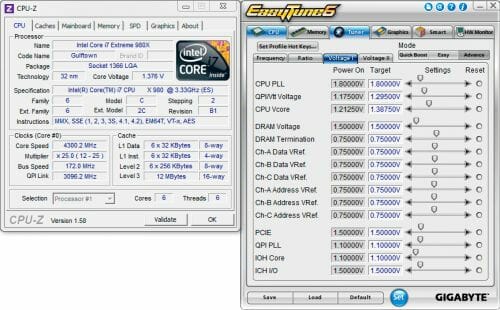
Turbo Boost and Hyper-Threading technologies were disabled during our test session. The memory voltage was at 1.5 V and its frequency was 1.38 GHz with 7-7-7-16_1T timings (Extreme profile). All other parameters available in the mainboard BIOS and related to CPU or memory overclocking remained unchanged.
All tests were performed under Windows 7 Ultimate x64 SP1 operating system. We used the following software during our test session:
- CPU Stress Test (CST) version 0.18b – to load the processor (matrix # 15, 10-12 minutes);
- Real Temp GT 3.66 – to monitor the processor core temperature;
- CPU-Tweaker 1.5 – to visually monitor temperatures and frequencies using graphics;
- Gigabyte Easy Tune 6 B11.2303.1 – to monitor voltages.
So, the complete screenshot during the test session looks as follows:
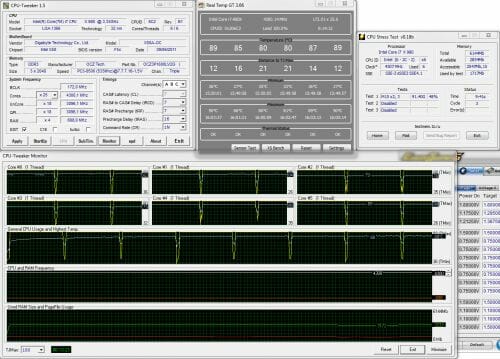
The CPU was loaded with two consecutive CST test runs with the settings as indicated above. The stabilization period for the CPU temperature between the two test cycles was about 8-10 minutes. We took the maximum temperature of the hottest CPU core for the results charts. Moreover, we will also provide a table with the temperature readings for all cores including their average values. The ambient temperature was checked next to the system case with an electronic thermometer with 0.1 °C precision that allows hourly monitoring of the temperature changes over the past 6 hours. The room temperature during our test session varied between 25.0-25.2 °C.
The noise level of each cooler was measured between 1:00 and 3:00 AM in a closed room about 20 m2 big using CENTER-321 electronic noise meter. The noise level for each cooler was tested outside the system case when the only noise sources in the lab were the cooler and its fan. The noise meter was installed on a tripod and was always at a 150 mm distance from the cooler fan rotor. The tested cooling systems were placed at the edge of the desk on a sheet of polyurethane foam. The lowest noise reading our noise meter device can register is 29.8 dBA and the subjectively comfortable noise level in these testing conditions was around 36 dBA (do not mix it up with low noise level). The fan(s) rotation speed was adjusted in the entire supported range using our in-house controller by changing the voltage with 0.5 V increment:
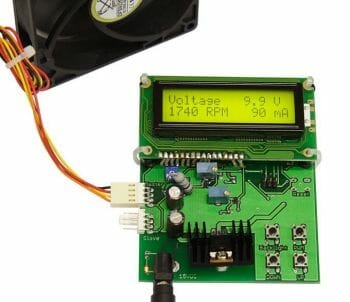
We are going to compare Thermaltake Bigwater A80 against Thermalright HR-02 Macho air cooler tested with one default Thermalright TY-140 fan:
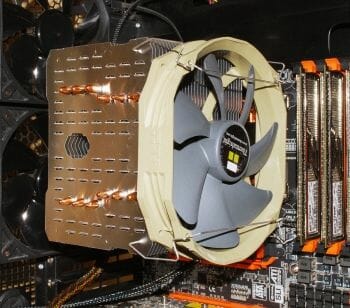
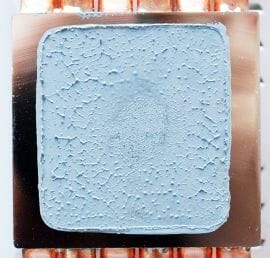
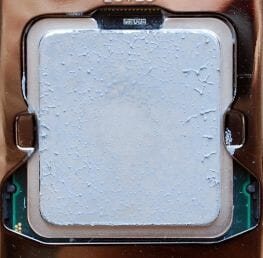
Thermalright HR-02 Macho was tested in nominal PWM mode (900-1300 RPM) as well as in the entire rotation speed range of its fan, from 600 to 1300 RPM with 200 RPM increments.
As for Thermaltake Bigwater A80, it was tested with one default fan as well as with two Thermalright TR-FDB-2000 fans in the 800-2000 RPM range with 200 RPM increments.
Performance
Cooling Efficiency
The test results of the Thermaltake Bigwater A80 system and its opponent are summed up on the following table and diagram (the results are sorted in descending order):
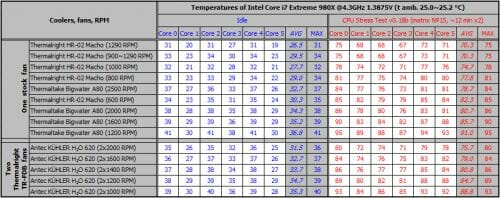
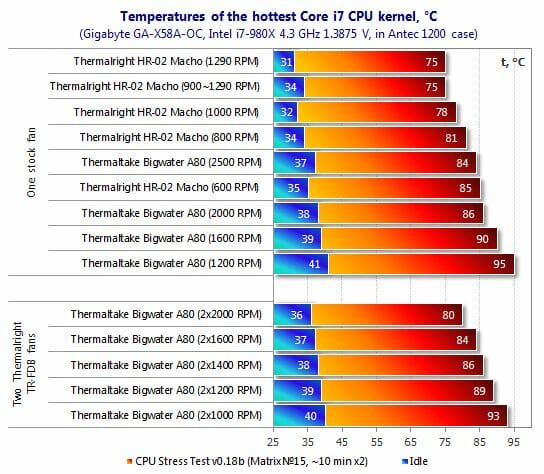
Quite predictably, the new Bigwater lost to the efficient air-cooler. And the defeat was pretty dramatic. Moreover, the system could only cope with an overclocked six-core processor when its fan was rotating at 1200 RPM or higher, which is not a quiet mode, as you may have already guessed. The cooling efficiency of Bigwater A80 is obviously restricted by its modest aluminum radiator, which is very sensitive to the intensity of the airflow going through it, just as we have suspected in the beginning of this review. At the maximum speed of the default fan, Bigwater A80 was as efficient as Thermalright HR-02 Macho at 600 RPM.
The cooling efficiency of Thermaltake Bigwater A80 improves when we switch to two alternative fans, but it is still lower than what HR-02 Macho is capable of. Nevertheless, I have to say that the system became 6°C more efficient at 1200, 1600 and 2000 RPM, and managed to cool the overclocked 6-core processor at 1000 RPM on both its fans. Unfortunately, the cooling efficiency of this system is pretty low, so it doesn’t really make sense to include its results into our summary diagrams as well as perform additional tests for maximum CPU overclocking.
Acoustic Performance
We measured the noise from our testing participants in the entire supported speed range of their fans following the methodology described above. The results are summed up on the following graph:
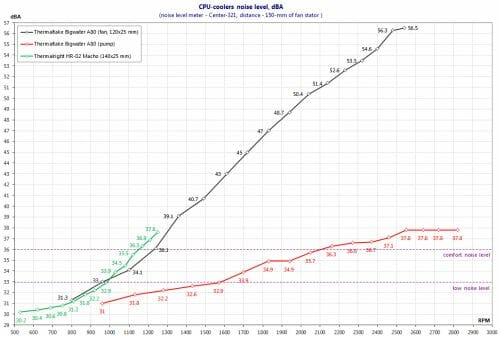
The fan of Thermaltake Bigwater A80 system becomes acoustically uncomfortable at 1250 RPM, and it may be considered quiet only at 950 RPM or lower and with a few additional reservations. However, I have to point out that in quiet fan mode we could still clearly heard the sound of the fan rotor. At high fan speeds, Bigwater A80 is pretty noisy, as you can see from the graph above. At the same time, we have to give due credit to a relatively quiet pump, which is not noticeable against the background of a noisy fan. If we disconnect the fan completely, you will hear the pump working, but the noise it produces is not acoustically uncomfortable in any way. So, in our opinion the fan deserves a “C” and the pump – a definite “A”.
Conclusion
This new test of another compact liquid-cooling system, Thermaltake Bigwater A80, didn’t produce any unexpected results. We have already seen this level of performance from similar systems before and Bigwater A80 stayed on it or even a little lower than that.
However, Thermaltake Bigwater A80 does have some indisputable advantages. First of all, Bigwater A80 is a universal system and supports the new LGA 2011 platform. Secondly, the system is very easy to assemble and install, and doesn’t require any special tools other than a screw-driver and any special servicing other than dusting the radiator every now and then. Thirdly, the new Thermaltake liquid-cooling system costs only $65, which is a very democratic price point for a system like that, even though it loses to a 40-dollar air cooler.
Frankly speaking, Thermaltake was very late to their market with their Bigwater A80. Corsair and Antec went through that stage about a 1-1.5 years ago, and today they already offer significantly improved H100 and KÜHLER H2O 920 systems. Therefore, the newcomer will most likely be able to compete only against air coolers. Although there may not even be a competition, after all.